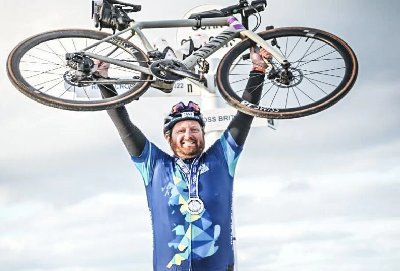Your Cart is Empty
wattbikes
accessories & service
training apps
news & information
Wattbike & Swimming - #Redefining dry land training
June 02, 2020 6 min read
When Norimasa Hirai was in his third year of University, his swim coach told him something that would be difficult for any athlete to hear: “You have coaching talent - I think you should be a coach instead!” Hirai had to make a difficult decision; if he became a coach, he couldn’t be a swimmer anymore and he was afraid he’d get bored of swimming if he wasn’t doing it himself. He decided to give it a go anyway, and found himself becoming more and more absorbed in his new coaching job.
When Hirai finished University in 1986 with a degree in Social Sciences, he was again faced with a difficult decision; should he take a secure job at a life insurance company, or become a swim coach at the Tokyo Swimming Center? Hirai took a leap of faith, and the rest is history.
COACH OF THE YEAR X4

Today, Norimasa Hirai is the Head Coach of the Japanese Olympic Swim Team and his training group is based at Toyo University in Tokyo. Hirai is an incredibly well-respected swimming coach, and has earnedSwimSwam’s Swammy Award for Asian Coach of the Yearin 2019, 2018, 2017, 2016, whichhas been dubbed‘the longest Swammy streak currently in existence’.
Hirai coaches most of Japan’s top swimmers, including, but not limited to:
- Reiko Nakamura (2x Olympic Bronze)
- Kosuke Kitajima (4x Olympic Gold, 1x Olympic Silver, 2x Olympic Bronze)
- Kosuke Hagino (1x Olympic Gold, 1x Olympic Silver, 2x Olympic Bronze)
- Aya Terakawa (2x Olympic Bronze)
- Natsumi Hoshi (2x Olympic Bronze)
- Yuka Kato (1x Olympic Bronze)
- Haruka Ueda (1x Olympic Bronze)
Additionally, at the 2019 World Championships that took place in South Korea, Hirai’s swimmers won five of Japan’s six medals, including both golds. Hirai has also guided Daiya Seto to the best year of his career, taking three of Japan's medals at the 2019 Championships.
TOYO UNIVERSITY SWIM TEAM

Wattbike’s presence by the pool has slowly been increasing over the past few years as its use gathers momentum in the swimming world. This momentum has partly been caused by Norimasa Hirai in Japan, and a few notable British swimmers in the UK such as Adam Peaty andJazz Carlin.
Historically, bike training has not been a common training method for swimmers, who, unsurprisingly, tend to spend most of their time in the water, but Hirai saw the benefits of using Wattbikes in combination with traditional swim training a few years ago, and implemented it within his team’s training programme in September 2018. Hirai and his team have stuck by this slightly unorthodox, yet very successful, method ever since and have never looked back.
Wattbike recently got the chance to catch up with Hirai to discuss how he has successfully implemented the Wattbike into his training methods. The interview took place at CAR Sierra Nevada, Spain, during his team’s annual training camp there last year.
You introduced the Wattbike for training at Toyo University, your team’s training base, over two years ago. Why did you decide to do this, when indoor cycling has not been common for swimmers?
I was wondering how I could strengthen the lower body of our swimmers. Before this, they had been doing dry land training such as weight training and running but I did not feel like this was the best solution. This kind of impact training can cause a lot of stress to knees, ankles and other joints of the body so I was looking for a better alternative. At this point, I knew that Adam Peaty and Jazz Carlin had been using the Wattbike for some of their training and I saw many other sports teams using the Wattbikes at Sierra Nevada, which made sense as this would produce less stress to joints and bones, and it could provide an appropriate training load for swimmers. It has been known for a long time that the German long distance swim team ride after their swimming sessions and get great results. That’s why I decided to introduce the Wattbikes into our training.
Also, swimming in a pool is the most basic of swim training. However, land training such as stretching, weight training and running have been an important part of swimming for a long time and swimmers have tended to spend a lot of time on these ‘pre-pool’ exercises. We have now replaced these with Wattbike training.

There are many different exercise bikes you could have selected, so why did you choose the Wattbike specifically?
As I mentioned before, I’d seen a few British swimmers using it. So then I went to the Japan Institute of Sports to try it myself and really felt that the Real Ride Feel could benefit swimming.
Because bike training is still a fairly new phenomenon for swim training, how have you created a training protocol for your athletes with the Wattbikes?
I asked coaches that had experience training with indoor bikes on an international level. I learnt from Michael Paul, an Australian swimming coach, that him and his team had been using a combination of training on the bike and swimming, and so me and my team tried something similar with the Wattbikes on the side of the pool. In addition to this, I tried using the Wattbikes as a warm up and created a 20 minute protocol that all my swimmers would follow twice per week during morning sessions.
Once athletes got used to the bike, I started introducing combination training which included 30s max sprints on the Wattbike followed by a 50m max swim. It was a trial-and-error process, we kept changing the protocol by monitoring athlete responses to each workout and adapted the protocol based on that. We also do MMP and the UCI test to evaluate athlete performance and to adapt our training protocols.
During this time, have you seen any specific improvements as a result of using a combination of Wattbike training with swim training?
I think it can be difficult for top swimmers such as Kosuke Hagino and Yui Ohashi to improve physical strength and endurance power only through underwater training. For Hagino in particular, I had been thinking for a while that some new stimulus is necessary as he has been doing hard swim training ever since he was an infant.
We have seen increases in kick power for all my athletes as well as hamstring and gluteal muscle efficiency, which produce a more powerful and fast reaction when diving from the start blocks. I believe this comes from the synergy effect of weight training and a high cadence Wattbike workout.
We have also noticed an improvement in the ability to keep fast and precise kicks for longer periods of time, meaning swimming has become more efficient for our athletes. In addition to this, our swimmers’ ability to fully use their physical capacity when swimming has significantly improved, I believe this is the effect produced by max power sprints on the Wattbike. My athletes agree with these principles and have experienced the benefits of training on the Wattbikes first hand.

What have your athletes said? How have they responded to this new kind of training?
They are very positive. In particular, Yui Ohashi and Kosuke Hagino have felt good effects already right after starting this training. They say that when they are swimming after being on the Wattbike, that they can kick smoothly and naturally despite having fatigue in their lower body. My other athletes, RIo Shirai and Reona Aoki are also very enthusiastic about using the Wattbike after making their debut at the World Championships and breaking a national record.
Thanks to the success of your athletes, Wattbike training has started spreading in Japan. Could you let us know your advice for swimmers who are looking to implement Wattbikes in their training?
In Japan, most swimmers start in early childhood and they focus solely on swimming and no other sports. If you look at top swimmers in other countries, they do other sports in addition to swimming at an early age, which will improve their general fitness levels. So I think the Wattbike can be a very important tool to use to increase endurance capacity and power output without the risk of injury. It also helps improve diving and kicks following a turn.
It’s important to find a good balance. We found that too much work on the Wattbike would tire the swimmers out to the point of them not being able to complete the planned swimming workout. However, this is more a problem for the coach, and can be solved by finding a more appropriate training method that has good balance between the bike and the swim.
How are you using the Wattbikes to get your athletes ready for big competitions, such as the Olympics?
To get ready for the Olympics, I will split Wattbike training and swim training, so each one is a separate session. Once the Wattbike training reaches a certain desired level, I will start a combination of bike training and swim training again. We will also do 6 second tests after weight training, and plan to take a Wattbike to most major swimming events this year for warming up.
----
Curious to learn more? Find out howthe NFL is redefining their off-season, and howthe UFC is redefining talent benchmarking, together with Wattbike.
Also in Sports Zone

England Rugby: Powered by Wattbike
March 14, 2024 3 min read
A recent behind-the-scenes glimpse into their training camp in York during the Six Nations' fallow week showcases not just the grit and determination of the players but also the innovative approach to conditioning that sets England Rugby apart.
Read More
LEEDS UNITED - EP 3: BENCHMARKING & TESTING DATA
January 31, 2024 2 min read
In the third and final episode of the Leeds United mini-series, you'll learn about how the Wattbike is utilised to test and benchmark the players throughout the year.
Read More
LEEDS UNITED - EP 2: REHABILITATION & RECOVERY
January 31, 2024 4 min read
In episode 2 of the Leeds United mini-series you'll learn how the Wattbike is utilised to aid rehabilitation programmes, active recovery and train in specific heart rate zones.
Read MoreUNLOCK YOUR EXCLUSIVE DISCOUNT!
SUBSCRIBE TODAY TO RECEIVE YOUR UNIQUE WELCOME SAVING DIRECTLY TO YOUR INBOX.










